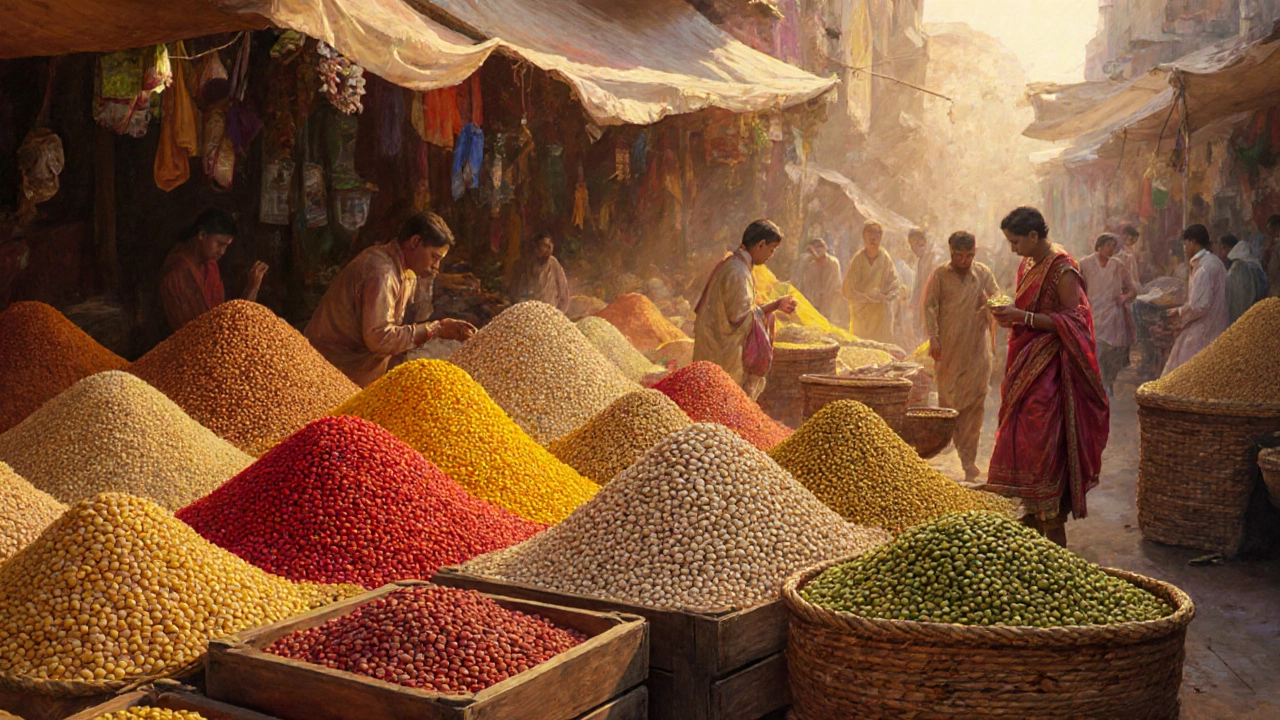Lentils: Cooking Tips, Soaking Secrets, and Health Benefits
When working with lentils, edible legumes that come in many colors and sizes, popular across Indian kitchens, you’re handling a type of pulse, the broader family that includes beans, peas, and lentils. In Indian cuisine the word dal, refers to cooked dishes made from split or whole lentils is often used interchangeably with the raw ingredient. This connection means that mastering lentils also means mastering dal – the heart of countless vegetarian meals. lentils provide plant‑based protein, fiber, and iron, making them a go‑to for nutrition‑focused cooks. The cooking process follows a clear pattern: soak, rinse, measure water, and simmer. Soaking lentils, softens their outer skin, reduces cooking time, and improves digestibility is a step many overlook, yet it cuts stovetop time by half and prevents the dreaded “hard center” problem. Once soaked, a typical water‑to‑lentil ratio of 3:1 yields a fluffy, soup‑like consistency for split dals and a firmer bite for whole beans. Timing varies: red lentils finish in 10‑15 minutes, while brown or green varieties need 25‑30 minutes on the stovetop or 8‑10 minutes in a pressure cooker. The key is to watch texture, not the clock, because altitude, hardness of water, and lentil age all play a role.
Key Tips for Perfect Lentil Dishes
Understanding the science behind lentils helps you avoid common pitfalls. First, always rinse the legumes to remove dust and anti‑nutrients that can cause flatulence. Second, add a pinch of turmeric or asafoetida (hing) while cooking; both act as natural digestives and boost flavor. Third, never add salt at the start – it toughens the skins; wait until the lentils are tender before seasoning. Fourth, remember that the same lentil can become a comforting soup, a thick curry, or a crunchy snack depending on how much liquid you use and how long you simmer. For example, the same split red lentil that turns silky in a dal can be dried out to make a crisp topping for salads. Finally, store cooked lentils in an airtight container; they keep well for up to five days and freeze nicely for future meals. By mastering these steps, you’ll be able to tackle the full range of articles below, from exact cooking times for pressure cookers to the health benefits of including lentils in a balanced Indian thali.

Dal vs Lentils: Key Differences Explained
Learn the key botanical, nutritional, and culinary differences between dal and lentils, plus buying, cooking, and storage tips for each.
- Chutney Recipes (13)
- Healthy Living (12)
- General (11)
- Easy Indian Recipes (9)
- Chicken Curry Recipes (9)
- Paneer Recipes (8)
- Healthy Indian Snacks (8)
- Dal Recipes (7)
- Street Food (7)
- Dosa Recipes (7)
-
Essential Spices for a Flavorful Chicken Curry
26 Jan 2025 -
Healthiest Fruit: The Secret Ingredient in Indian Healthy Snacks
12 Jun 2025 -
Can I Make Paneer from Broken Milk?
4 Apr 2025 -
The Most Healthy Indian Snack: Discover Your Next Favorite Treat
21 Mar 2025 -
The #1 Superfood: Surprising Health Benefits, Uses, and Science-Backed Facts
18 Jul 2025
29.09.25
Kaia Binari
0